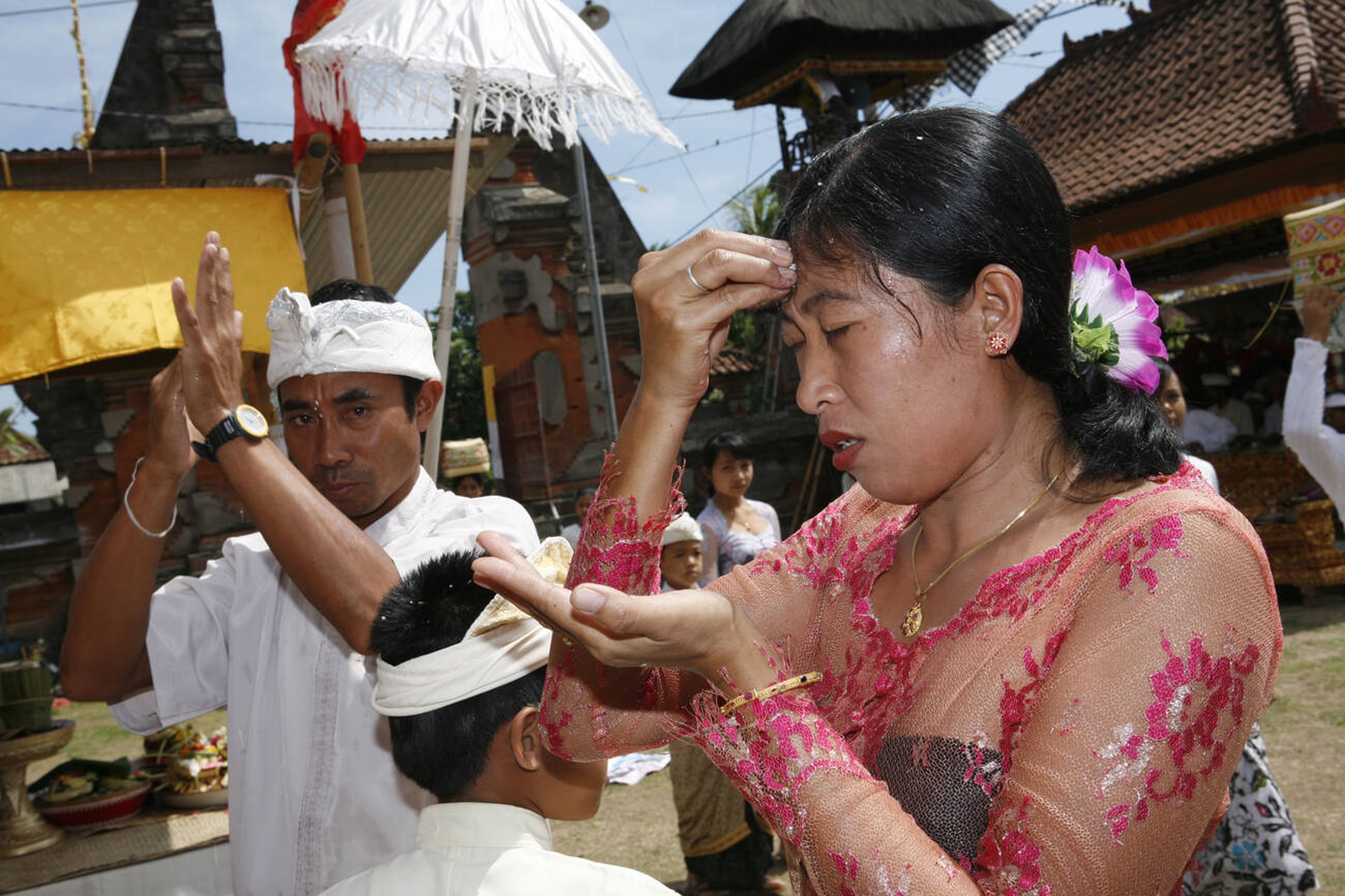If you’ve ever visited a Balinese temple, you may have noticed small grains of rice pressed onto the foreheads and necks of worshippers. This sacred rice, known as bija, holds deep spiritual significance in Balinese Hindu culture. Both men and women receive bija as a symbol of holiness after participating in prayer ceremonies. These rice grains are much more than just a ceremonial accessory—they represent the spiritual seeds of divinity within the individual.
Blessed Rice Grains: The Significance of Bija in Balinese Ceremony
Origins and Meaning
The word "bija" comes from the Sanskrit term meaning "seeds," which metaphorically represents the seeds of spiritual growth and divine potential. In the Balinese Hindu context, bija symbolizes purity, fertility, and the potential for spiritual development. It is closely linked with the concept of Kumara, the divine son of the god Siwa (Shiva). Kumara embodies the spiritual essence of Siwa, and receiving bija represents the act of nurturing this divine quality within oneself.

The rice grains used for bija are carefully selected to ensure they are whole and unbroken, as broken rice is believed to lack the capacity to "sprout" or grow the divine essence. This symbolic importance of the unbroken grain highlights the belief in nurturing a complete and undivided spiritual connection. Worshippers who receive bija carry a piece of this divine energy with them, fostering their inner growth and connection to the divine.
How It Used in Balinese Hindu Rituals
In Balinese Hindu ceremonies, the use of bija is an integral part of the worship process. After prayers are offered, and blessings are sought, the priest bestows bija on the worshippers, typically placing it on specific areas of the body that are believed to be spiritually significant.

Anja Chakra (Third Eye): Positioned slightly above and between the eyebrows, this chakra is considered the seat of wisdom and spiritual insight. Placing bija at this point is believed to open the third eye, allowing the individual to gain clarity, wisdom, and spiritual vision.
Vishuddha Chakra (Throat): The throat chakra is another crucial area for bija placement. Located on the neck just outside the esophagus, the bija placed here is thought to promote clarity of speech and purity of spirit, as well as to foster happiness and spiritual growth.
Mouth: The final placement of bija is within the mouth. Worshippers are instructed to swallow the rice whole without chewing, as breaking the grain symbolizes a failure to fully develop one’s divine qualities. By swallowing bija intact, worshippers internalize the divine seed, allowing it to grow within them.
While these three locations are the most common, there are other spiritually significant spots on the body where bija can be placed. For instance, during special ceremonies, additional locations, such as the navel (Manipura Chakra) or the heart (Padma Hridaya), may also be blessed with bija to further connect the individual with divine energy.
Nunas Bija
The act of receiving bija is known as nunas bija or mebija. It usually follows the offering of tirta (holy water) during worship ceremonies. The process begins with the rice grains being carefully washed and purified with sandalwood water or plain clean water, ensuring that the rice is sanctified before use. Worshippers receive both tirta and bija, with the application of rice being the final act in the prayer ritual.

This sacred practice not only signifies the completion of the ceremony but also serves as a powerful reminder to worshippers that they are carrying a piece of divinity within themselves. As they leave the temple, the bija on their bodies remains a visible mark of their spiritual journey and their connection to Siwa’s divine energy.
Deeper Symbolism
The significance of bija extends beyond its ritual use. It is a constant reminder for worshippers to strive toward a life aligned with dharma, or righteous living, as outlined in the Hindu scriptures. The act of receiving and wearing bija is a physical and spiritual affirmation of one’s commitment to purity of thought, word, and action. The grains of rice are more than a spiritual accessory—they represent the cultivation of divine qualities within the individual. Just as seeds grow into strong plants, the unbroken grains of bija symbolize the growth of wisdom, compassion, and purity in the heart of each worshipper.

The giving of bija during temple ceremonies highlights the importance of spiritual practices in Balinese Hindu life. Each temple visit, prayer offering, and bija placement adds another layer of sacredness to the island’s rich cultural and spiritual landscape.




 Billy Bagus
Billy Bagus
 Sep 17, 2024
Sep 17, 2024






